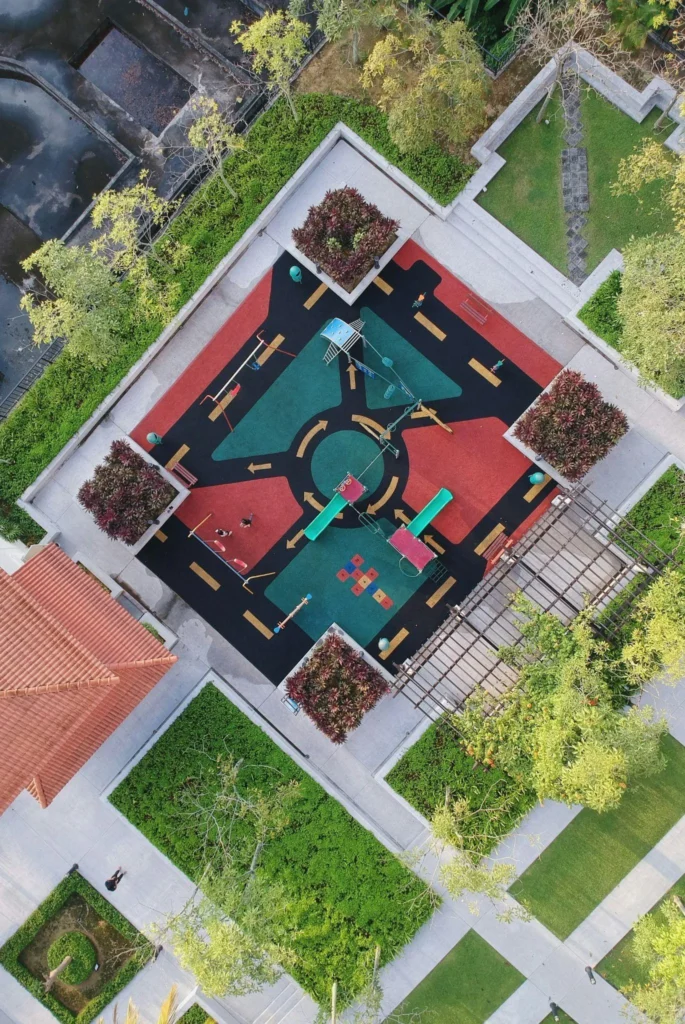School playgrounds are meant to be safe havens where children can run, explore, and play freely. But are there hidden threats that go unnoticed? From exposure to harmful chemicals to unexpected hazards like uneven ground, playgrounds may not be as safe as they seem. Discover the unseen risks that could be affecting children’s health and well-being—and what can be done to make playtime safe.
To ensure playgrounds remain places of joy rather than harm, we must address the environmental hazards that put children at risk. One innovative solution gaining popularity is the use of turf for playgrounds, which provides a safer and more durable surface for kids to play on. In this article, we’ll explore the hidden dangers of conventional playgrounds and why finding safer alternatives is essential.”
Environmental Dangers in Traditional Playgrounds
Before diving into the solution space, we must acknowledge the dangers within the standard playground environment. They aren’t necessarily overt, yet they play a significant role in influencing the welfare and health of children.
Chemical Exposure
Many playgrounds incorporate poisonous pesticides that put children at risk of lung disease and allergies.
Uneven Surfaces
The ground surface will be uneven with the passing of years, with wear and tear, weather, and improper maintenance. This will enhance the likelihood of tripping, falling, and injury among the highest mishaps within the play area.
Allergens and Pests
Grass and ground surfaces also harbor such allergens, including pollen, mildew, and dust, that trigger allergic reactions and asthma among children. Grass and ground surfaces also harbor pests, including ants, bees, and rodents, that further put children at risk of hazards.
Water Runoff and Mud
After rain, natural grass surfaces also become muddy and slippery, and thus a source of unsafe play surfaces. The ground also becomes a site of standing water that becomes a site of insect and mosquito breeding grounds.
Heat Absorption
Traditional playground surfaces of rubber and asphalt absorb and retain heat throughout the summer. This not only discourages children from playing on the surface area but also increases the likelihood of heatstroke and heat fatigue.
Why Addressing These Dangers Should Be a Priority
Safety is of great importance in play areas that children frequent. Children physically, socially, emotionally, and cognitively grow through playgrounds. Environmental hazards jeopardize this development and enhance the risk of injury. Schools and the public must design a child-friendly environment that avoids injuries and exposes children to other threats.
Mitigative Steps to Improve Playground Safety
Artificial Turf: A Safe and Sustainable Alternative
Artificial turf has emerged as a game-changing solution for school playgrounds. It also provides a consistent, even surface that reduces the risk of trips and falls.
Its strength ensures a firm, non-tripping surface that prevents injury. Its sunlight-reflecting surface also reduces the temperature of the play area during the summer.
Rubber Mulch and Soft Fall Surfaces
Rubber mulch and soft fall surfaces minimize the risk of injury in play zones. Composed of recycled rubber, they absorb better compared to gravel and shavings of wood and offer a safer solution.
Shade Structures and Greenery
Shade structures, such as pergolas and umbrellas, provide children with sunshades. Trees and bushes in the play space also provide natural shade and beautification.
The Long-Term Benefits of Safer Playgrounds
Investing in safer playgrounds goes beyond addressing immediate risks; it’s about fostering environments that nurture children’s growth and development for years. Fewer injuries and illnesses mean reduced healthcare costs for families and schools, alleviating financial burdens and ensuring resources can be directed toward educational and recreational programs.
Safer play zones lower the risk of injury and enhance the development of children. Lower injury rates equate to lower healthcare expenditure for schools and households, which reduces economic burden and frees up the budget for recreation and education.
Conclusion
School playgrounds should be safe havens where children can play, learn, and grow without fear of environmental hazards. By addressing the dangers present in traditional playgrounds, we can create spaces that prioritize children’s health and well-being.







